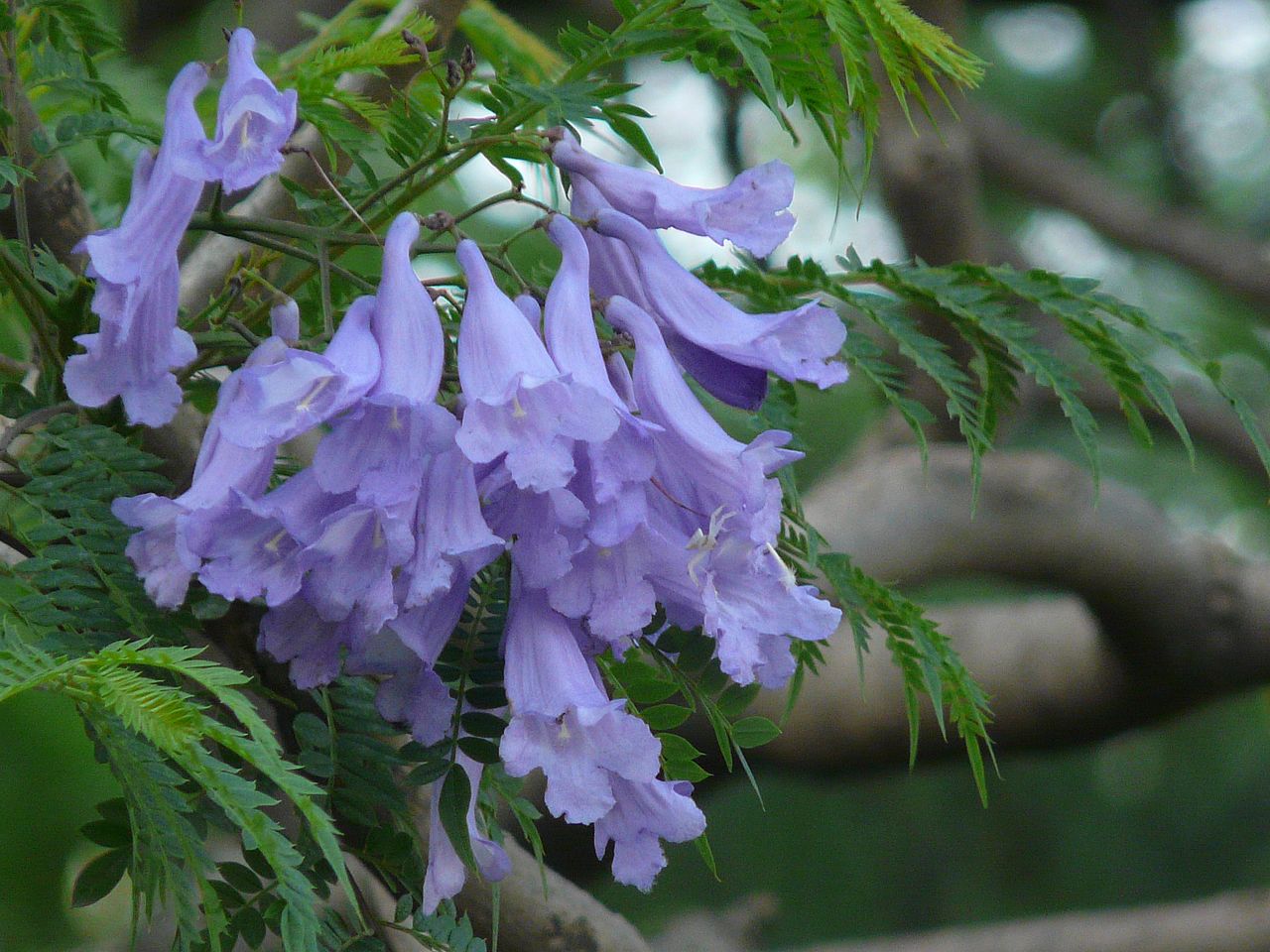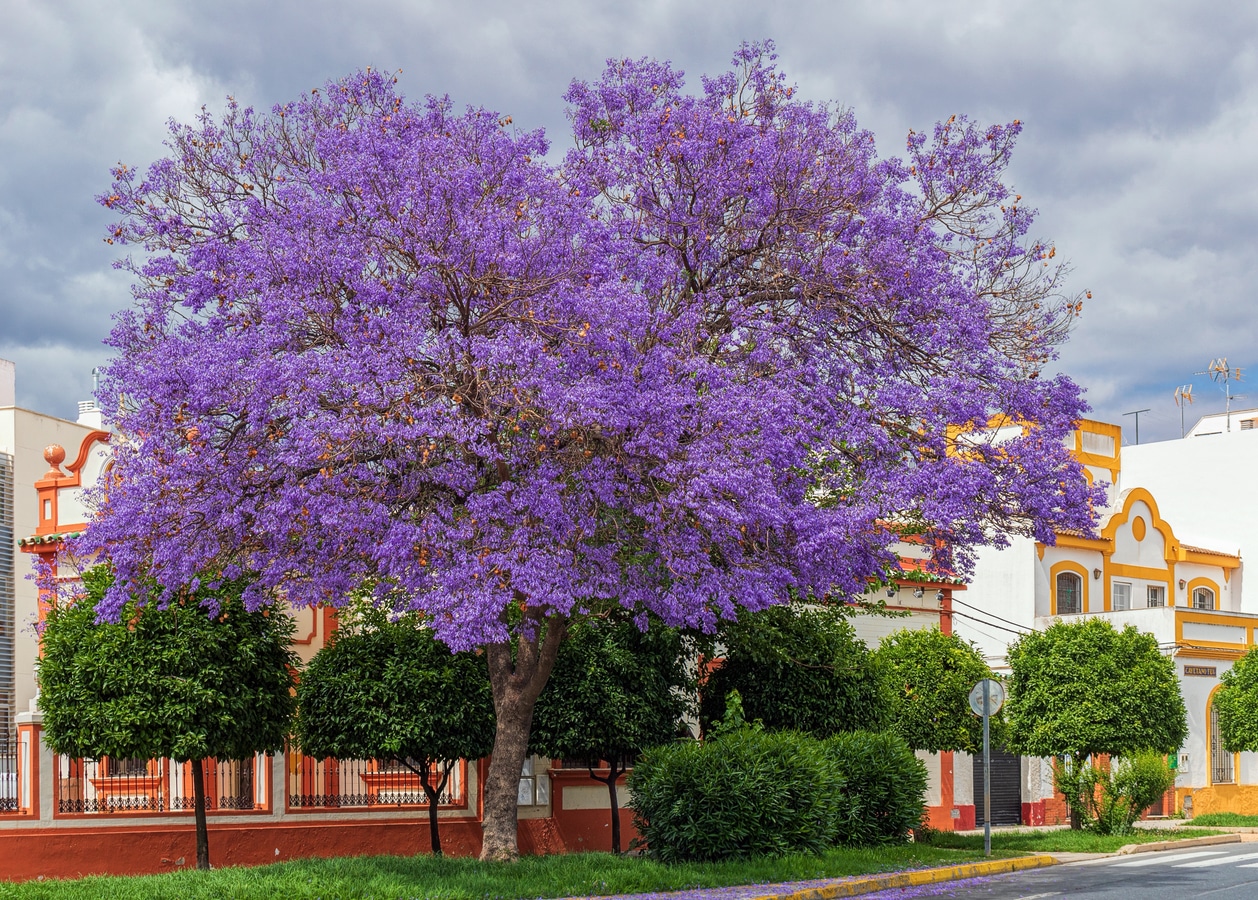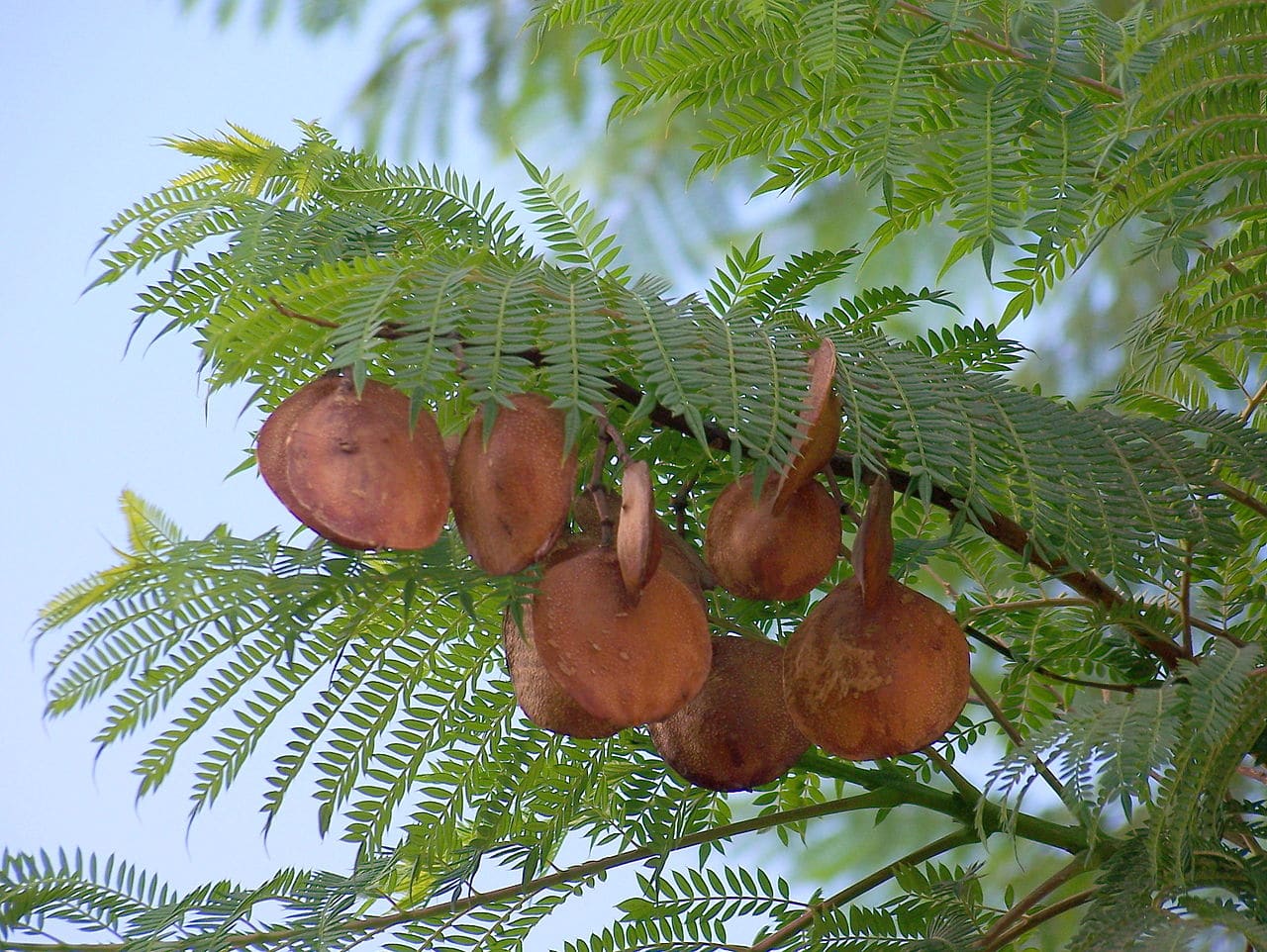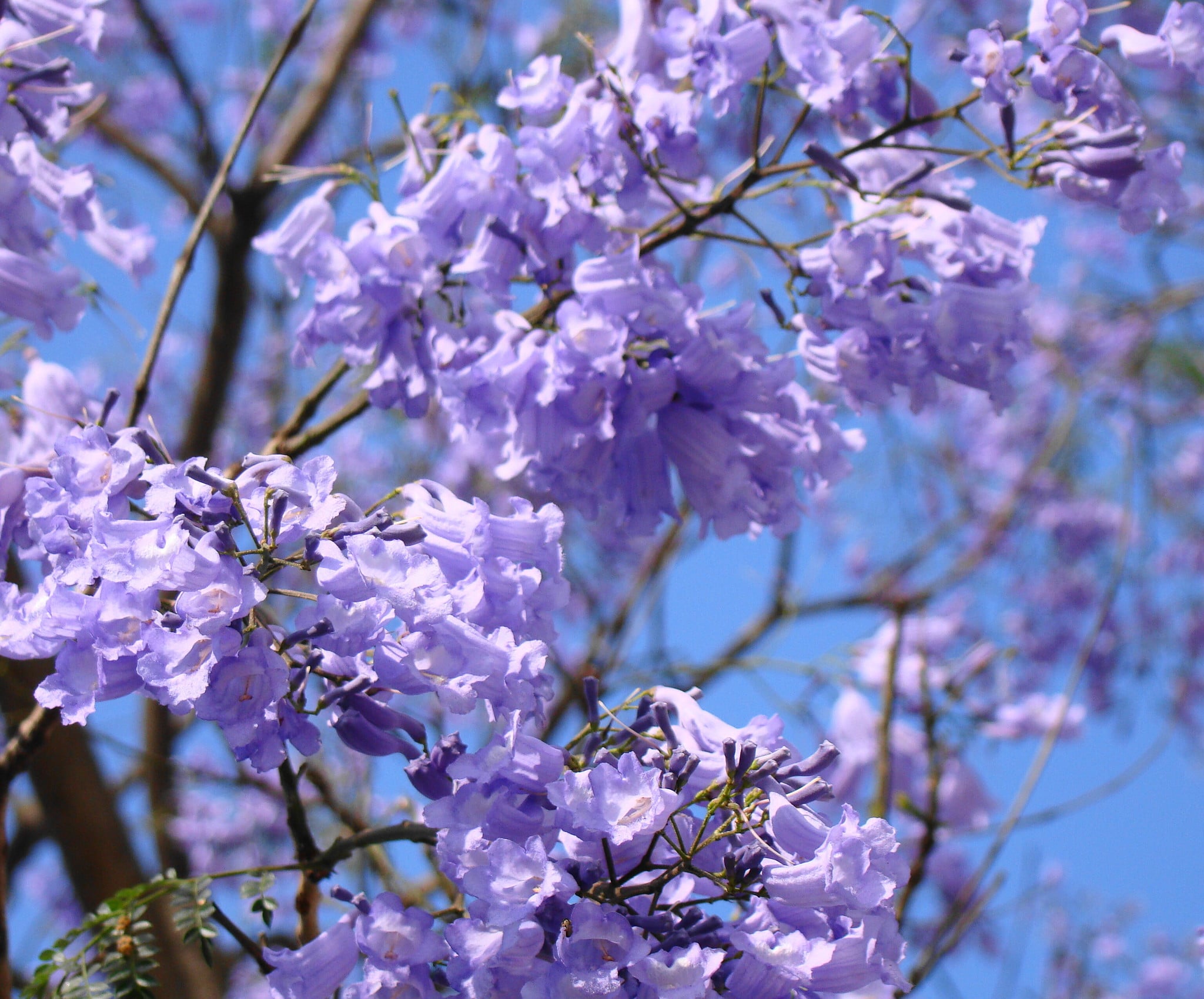
Image sourced from Wikimedia/Dinesh Valke from Thane, India
El jacaranda mimosifolia It is one of the most common ornamental trees in gardens in temperate and warm climates. Not only does it provide a very pleasant shade for much of the year, but also, in spring it is dressed in a large number of flowers that attract all eyes... even those of the most beneficial insects, such as bees.
It resists light frosts well., and although it may need some help to withstand the wind, especially when young, as it gains height, it also gets stronger, and as we do we will realize that keeping it healthy and happy is becoming easier.
What is the origin and characteristics of the jacaranda mimosifolia?

It is a deciduous or semi-deciduous tree known as jacarandá, jacaranda or tarco, and whose scientific name is jacaranda mimosifolia. It is native to South America, specifically we will find it growing naturally in Peru, Brazil, Bolivia, Paraguay, north and northeast of Argentina and north of Uruguay.
Grows to a height of 12 to 15 meters, being able to reach 20 meters if the right conditions are given. It has a fasciculated root system, non-invasive, so it is interesting for small-medium gardens.
The cup is open, ovoid and irregular, not very dense. It is formed by bipinnate leaves 30 to 50 centimeters long, composed of 25 to 30 pairs of light green leaflets. The tree may lose its foliage in winter, or only part of it. In warm-temperate climates, with mild temperatures, it is normal to keep almost all of them, or to lose them only when there begins to be a light frost.
Blooms in spring, before the budding of the leaves. The flowers are grouped in terminal panicles of good size, measuring 20 to 30 centimeters, and are violet-blue in color. Its fruit is woody, castanet-shaped, and measures about 6 centimeters in diameter. Inside we find winged seeds, brownish in color.
What uses is it given?

Image sourced from Wikimedia/Philmarin
The jacaranda is a tree that in the Old Continent we use it as ornamental, either as an isolated specimen, in groups or sometimes in alignments. It is also common to see it as part of urban trees, in parks and streets.
Now, in their places of origin, the leaves, flowers and bark are attributed medicinal properties; specifically, antitumor and spasmolytic. But I do not advise consuming any of its parts without first consulting an expert so as not to put your health at risk.
Another use that is given is for carpentry work. The wood is light in color, light and easy to work with. It is used to build indoor furniture.
What are the care of the jacaranda mimosifolia?

Image sourced from Flickr/mauro halpern
The jacaranda is a beautiful tree, which I am convinced will brighten your day to day life. Its roots, as we mentioned before, are not invasive, so you will not have any problems. Yes indeed, it is very important that if you have it in the garden, you plant it at a minimum distance of 5 meters so that it can develop normally.
Needs sun and frequent watering. In this sense, it has to be watered 3-4 times a week in summer and 1-2 times a week the rest of the year. Likewise, organic fertilizer (guano, compost, or other) must be provided in spring and summer so that it does not lack anything.
You can keep it in a pot with holes in its base for many years, with a universal substrate mixed with 30% perlite. Remember to transplant it to a larger one every 2-3 years.
Resists up to -7ºC, but as a young man he needs some protection. Young specimens and newly planted ones are colder, so do not hesitate to protect them with an anti-frost cloth and/or plastic during the first years.
A jacaranda appeared spontaneously in a spot in my garden. It grew amazingly fast, it is a place where it will not be able to develop properly. It measures about three meters. How will I transplant it?
Hi, enzo.
In autumn, when it loses its leaves, give it a more or less drastic pruning. If it measures three meters, leave it with 2.
Then, make trenches around it, about 50cm from the trunk and deep, about 60cm. Then, with a spade (it's a kind of shovel but with a rectangular and straight blade) you can pry it out.
And finally, plant it somewhere else. 🙂
Regards!
HELLO, WE'RE ENTERING SPRING AND IT'S LOSING ITS LEAVES, I DON'T KNOW WHAT HAPPENED TO IT IT WAS BEAUTIFUL, WHAT DO YOU THINK IT COULD BE OR COULD I DO SOMETHING TO IT?, THANK YOU.
Hello M. Cristina.
It may be that it has a plague, or that it has been cold and is manifesting it now (sometimes plants react like this).
I recommend you wait to see how he goes, as long as his health is good. You can add a little earthworm humus or manure from some herbivorous animal (which is NOT fresh).
Greetings.
It can be planted in this spring time, they sell me one about 8 meters high, but it is still in the bag
Hello Gustavo.
Yes, you can plant it in spring.
Greetings.
Hello, will it be possible to always have it in a pot?
Hi Jane.
No, you can't always keep it in a pot. It is a tree that needs room to grow 🙂
Greetings.